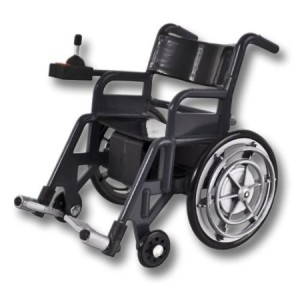Handicapable Mobility Devices Use and Consideration
 If you have an injury or a health issue that immobilizes you and restricts your movement, you may need a mobility device that suites your need to be independent. Wheelchairs and scooters are just the devices that you can use to get you going again. However your size, shape and age are factors that must be considered when deciding on the features for your individual mobility needs.
If you have an injury or a health issue that immobilizes you and restricts your movement, you may need a mobility device that suites your need to be independent. Wheelchairs and scooters are just the devices that you can use to get you going again. However your size, shape and age are factors that must be considered when deciding on the features for your individual mobility needs.
Essential factors to consider when selecting a mobility device is the environment and the general weather conditions which you need to cope with. Of course, any mobility device you choose will require ramps and lifts that will make life easier and much more convenient. So you also have to consider where you go with these devices seriously.
There are many kinds of wheelchairs to choose from including both hand-operated and battery powered. If you have reasonable top body durability and are not totally disabled, you may possibly be happy with a manually operated wheelchair. One big advantage of a manually operated wheelchair is that it is light-weight and easy to travel with, but be sure to pick one that fits your life-style.
In other words if you can get around with a manual wheelchair with arm power, it is the less costly way, there are no heavy batteries to recharge, and the fact that it is light-weight makes taking it on a trip reasonably simple.
Wheelchair Features
1. The standard wheelchair has adjustable armrests and footrests. They are made of steel, chrome, or light weight aluminum. This of course, has more direct effect on the weight and stability of the wheelchair.
2. Folding wheelchairs may come with detachable armrests and/or footrests, and are particularly suitable for people that can stand up.
3. An orthopedic wheelchair is a great choice if you have hip or knee problems, since it has a lot more leg elevation, enabling the legs to have a larger range of settings.
4. A reclining wheelchair with an adjustable back-rest is best if you have trouble in sitting upright or have to rest regularly.
5. A wheelchair appropriate for the young should be suitable for social school environments, and if it is for long-term use it should allow for “growth” with the child. This implies that it has detachable armrests and footrests. Preferably, choose one that enables replacement of the cross-brace and the front framework parts.
6. Ultra-lightweight chairs vary in weight from twelve pounds to forty-five pounds and are usually made for wheelchair sporting activities. Today, they have actually come to be popular for everyday usage as a result of their active appearance and ease of transportability.
7. Specialized chairs are built for people that require large chairs or chairs that can sustain extra weight, and for those whose center of gravity is a result of leg amputations.
8. There are chairs made specifically for people in retirement homes; chairs that can be run by programmable joysticks, head controls or are voice activated.
9. Electric scooters are for local shopping, outing and vacation travel. If you want long range mobility, they are more durable than a wheelchair and better suited to flow with pedestrian traffic.
As indicated, mobility devices come in many different forms and serve lots of unique physical needs. Your choice of device or devices will depend on your life style and should take into consideration maintenance and service expenses as well as use and convenience.
May 19, 2014
